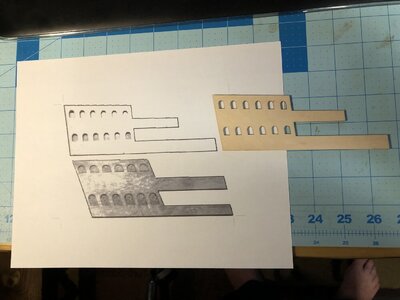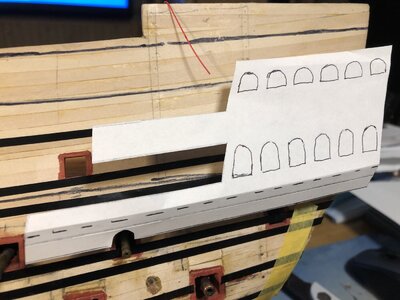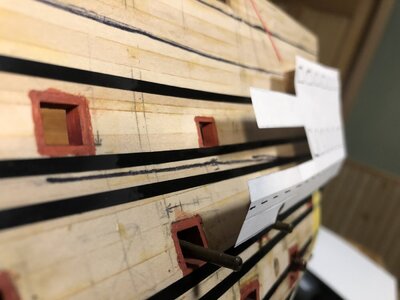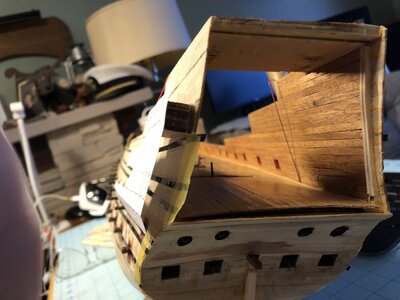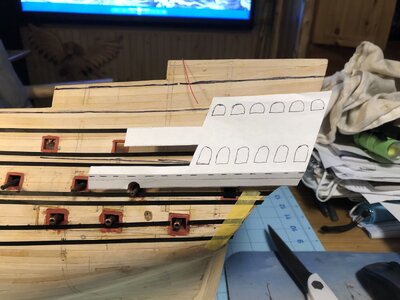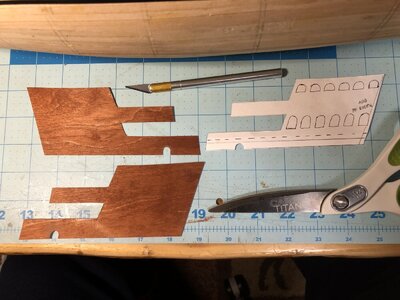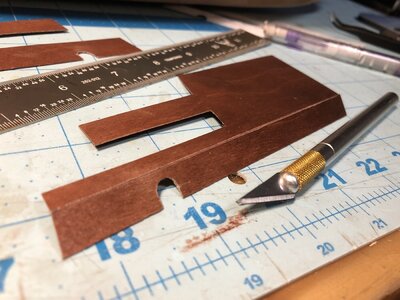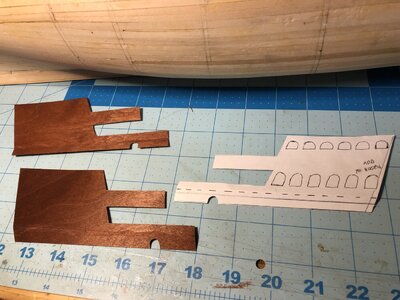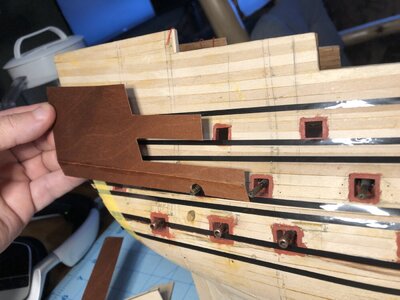I twitch when the wales don’t follow the cannon openings and haphazardly go through them. Very odd! I suppose they are like this, on this particular ship, but it certainly is not pleasing to the eye. It’s like nailing your door frame out of line with the door! It will never look correct, even if it was historically done that way, at least from a carpentry and artistic point of view that is. That alone would make me chose a different ship. But I still appreciate the attraction people have to this ship, even if I don’t share it.
Sorry Frank. It appears I replied to the wrong person, and this whole conservation was not directed only at yourself. I replied for everyone's benefit. Please don't ever be afraid to ask us questions or make comments. It is certainly no bother, and when people make comments or ask questions, I learn a lot! We are very informal and enjoy discussing these topics. Thanks!
Good morning to you, just to be consistent with my research, Nigel's model has nothing to cite, here is a text from Duhamel du Monceau's text "
Pregnant 15.
The pregnant 15, are sometimes improperly called the "forms". They are large boards that are wider and once thicker than the others. Since they behave like belts all around the vessel at different heights, they serve to chain it, and form protrusions that give it grace.
The pieces of the pregnant women are connected to each other by means of sculls, and fixed to the ribs by means of nails, and directly to the armrests and to the porches, by means of the pins of these same pieces that are inserted inside on washers.
There are usually two pregnant women under each battery. Later we will indicate the way to trace them. It will be enough, for the moment, to say that it is necessary to avoid, as far as possible, that they are cut by the hatches, and that the second pregnant must be conducted in such a way as to pass through the last rear hatch that cuts it a little. It continues along the entire length and under the doors of the first battery up to the front, where it ends a little below the last front door. The other pregnant women, who are placed above, follow the same curvature as this one.
Now I would like to go into a little detail on the width and thickness of pregnant women, because it is necessary to know their dimensions to make a plan well.
The pregnant women of the first battery are nearly as wide as the keel, and their thickness is 5 lines, 9 points (13 mm) for every inch (27.1 mm) of their width.
The third pregnant is 1/7 less wide than the second, and its thickness is 5 lines, 9 points (13 mm) for every inch (27.1 mm) of its width.
The fourth is 1/12 less thick than the third, and its thickness is 5 lines, 8 points (12.8 mm) for each inch (27.1 mm) of its width.
The pregnant fifth has a width of 2/3 of the first, and its thickness is 5 lines 8 points (12.8 mm) for each inch (27.1 mm) of its width.
The discolati, or girdles of the gang leader, have, as a width, 2/3 of the width of the first pregnant. Their thickness is 5 lines, 8 points (12.8 / 27.1mm) for each inch (27.1mm) of their width.
The pregnant of the outline of the mainmast and the foremast have a width of 6 lines, 6 points (14.7 mm) for each inch (27.1 mm) of the width of the first pregnant, and their thickness is 5 lines, 8 points (12.8 mm) for each inch (27.1 mm) of their width.
The pregnant of the second posterior contour has a width of 5 lines, 8 points (12.8 mm) for each inch (27.1 mm) of the width of the first pregnant, and its thickness is 5 lines, 6 points (12, 4 mm) for each inch (27.1 mm) of its width.
The pregnant of the third posterior contour has a width of 5 lines, 6 points (12.4 mm) for each inch (27.1 mm) of the width of the first pregnant, and its thickness is 5 lines, 6 points (12, 4 mm) for each inch (27.1 mm) of its width.





